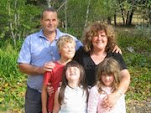To individualise the door I chose to embellish the lower panel in a similar fashion to the shamrocks on Foynes;
http://www.winkieg.blogspot.com.au/2012/08/67-front-door-part-1.html.
Lots of ideas passed through my head, but my love of the Quercus genus
and the slowly expanding plantation of these here for my Truffle
venture, had me settle on the carving of an Oak leaf.
As we were now well into Autumn, there was plenty of leaves on the ground, from the myriad of variety's of Oak planted all around the property. I picked through the piles, collecting as diverse a range of leaf shapes as possible for a final selection.
For me, the best example that represented the Genus, that was also of pleasing proportions was the smallest one in the above photo. It belongs to Quercus Robur, the English Oak, probably the most widely planted variety in Australia, hence the familiarity. I photocopied the leaf and enlarged the image until a suitable size was attained for tracing on to the panels.
Some of the other leaves shown are a selection of American variety's, with the deeper lobes, Canary Oak, in the centre and some Mediterranean variety's, with the serrated edges.
The door was to be made entirely from Lebanese Cedar. I formed all the panels in the same way, laminating various pieces together to make up the widths and then applying bookmatched veneers to the inside faces. The bulk of the waste was then removed from the front. The edges of the raised section on the panels were routed to the finished profile with extra thickness allowed for the patterns.
Using various templates and jigs, a rough outline of the leaf shape was routed out. This ensured a flat and even background was attained. The leaf was then more finely carved to profile with chisels and the surface was veined and lightly contoured, to give it a bit more life.
The shield patterns on the upper and intermediate panels were routed using mdf templates and a bastardised rounding over bit. I couldn't locate a suitably profiled bit from the local suppliers, so the nearest alternative I could procure was carefully ground on the bench grinder, until it was close enough to the right size.
The door was assembled using the normal methods of wedged mortise and tenon joints. I ran a large quantity of bolection mouldings, more than sufficient for all of my external doors. This was owing to the amount of setup required, for the multiple passes over the router table, to achieve the desired finished profile. From memory these totalled about 7, not including the initial sizing and the final rebating. The rebates are matched to suit individual doors, dependant on the depth of the finished panel from the face.
Once completed, the hinges were sunk and the door was hung and lightly trimmed to suit the opening. The inside face was finish sanded, then, as per the frame, was also stained and lacquered before final installation.
A suitable mortice lock for the door proved rather difficult to source. Currently, the lock ranges available, incorporating a brass finish are very limited, the common response from suppliers was that it's now "out of fashion". The combination of a long case, to provide a greater visual separation of the handle from the key barrel, and the correct 'backset', left only one available option, which had to be ordered from the manufacturer in Tasmania. Unfortunately though, the supplied striker plate, the only that was available for this model, was a universal fit that looked rather flimsy and daggy with it's one long slot. Visits to a couple of restoration supplies found nothing else suitable, so I sourced some brass plate and made my own!.
The hole is finally plugged. Plywood was cut to temporarily fill the glazed openings until the leadlights are designed and made.
The shameful self promotion couldn't be helped for this external shot, the ladder is lashed to the scaffold in that position, for access higher up!.
The only thing left to be done now, before painting, is the carved Brackets, (or Modillions), which sit above the capitals, the subject of the next post.
Sunday, August 4, 2013
76, Front Door, part 7, the Door.
Subscribe to:
Post Comments (Atom)









1 comment:
Appreciate the recommendation. Let me try it out.
Feel free to visit my web site - double glazing
Post a Comment